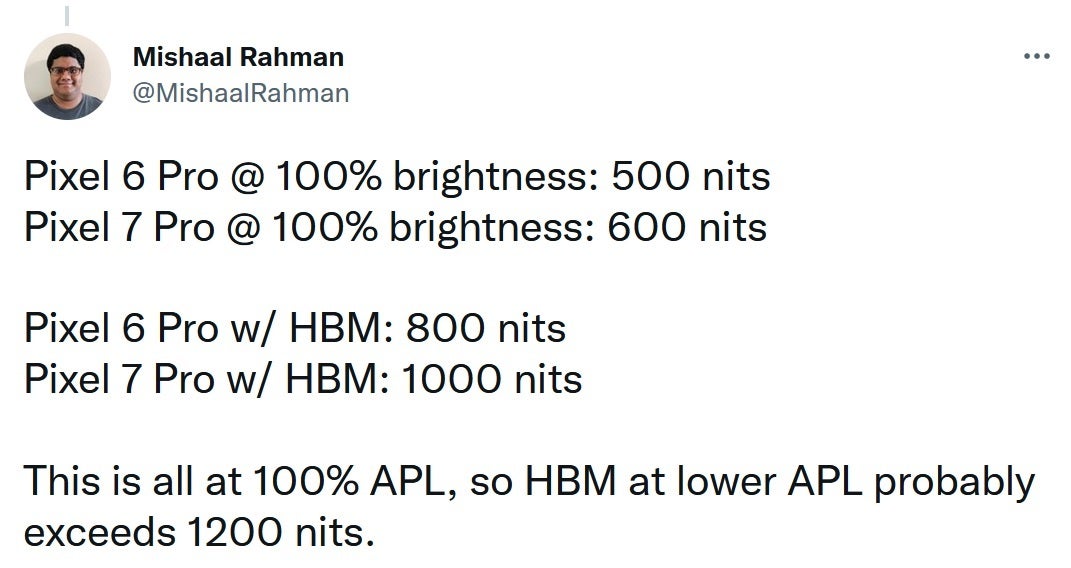Pixel 7 Pro rumored to have brighter display than Pixel 6 Pro; other specs discovered on prototype
The Google Pixel 7 Pro will sport a brighter display than the one on the Pixel 6 Pro
According to the source code, the Pixel 7 Pro will go as bright as 600 nits in Manual mode, up 100 nits from the top brightness in Manual mode on the Pixel 6 Pro. In Auto mode, the peak brightness on the Pixel 7 Pro will be 1,000 nits compared to 800 on the Pixel 6 Pro. The Pixel 7 Pro could end up using the Samsung S6E3HC4 display panel, which is one generation newer than the display used in the Pixel 6 Pro.

Rahman reveals data showing that the Pixel 7 Pro screen will be brighter than the Pixel 6 Pro display
The Pixel 7 series is also reportedly going to feature a native 1080p mode which will save battery life. Many smartphone users say that they cannot tell the difference between viewing content at 1080p and 1440p although this writer disagrees. The latter offers a slightly sharper image that some smartphone users, like yours truly, can discern.
Pick up the Google Pixel 6 and Pixel 6 Pro
It will be interesting to see how many Pixel 6 series owners will give Google a second chance later this year when the Pixel 7 and Pixel 7 Pro go up for sale. It would be nice if Google were to reward those who supported the 2021 Pixel models by offering a super trade-in deal for the Pixel 7 line. While it would be nice, we aren’t holding our breath.
And for those wondering whether a buggy phone can be turned around sharply for the second-generation model, the answer is “yes” and we can also give you a great example. One of the buggiest phones of all time-if not the buggiest-was the BlackBerry Storm. The first touchscreen BlackBerry, the virtual QWERTY was supposed to copy the feel of typing on a physical keyboard.
Can Google make the necessary changes to the Pixel 7 series?
When BlackBerry designed the phone, it included just one sensor in the middle of the QWERTY making the clickable keyboard a failure. Taps further away from the middle of the QWERTY failed to register correctly. Every unit sold by Verizon reportedly was returned. When the sequel model was designed, four sensors were included covering all of the keyboard and as a result, the keyboard performed much better. The clickable QWERTY “SurePress” technology worked as promised allowing users to feel as though they were typing on a physical keyboard.
Consumers might be willing to give Google that second chance, but if it doesn’t deliver the goods this time, the company is going to run into some serious problems with its image.


